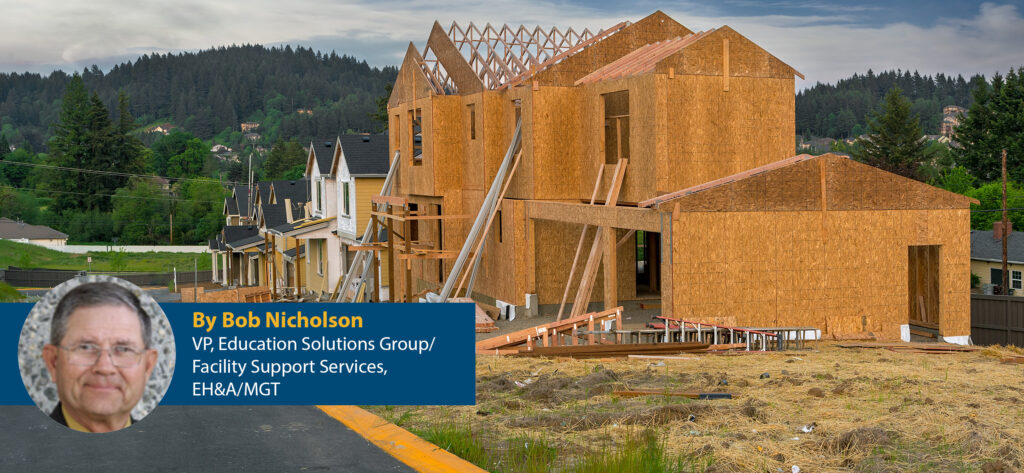
In part one of this multi-part series of articles, we discussed what to know and why to know about development impact fees. We discussed that development impact fees are NOT a tax but are, rather, one-time charges applied to developments. We discussed why we need these fees and for what they are used. If you missed part one, you could find that article here. In our second part, we briefly discussed some of the history of developer fees for school facilities in California. In part three, we briefly discussed the three levels of fees. In part four, we discussed special circumstances and use of fee.
In this article, we discuss adopting and increasing the fees. This topic will focus on what your Developer Fee Justification Study might include and the steps to follow before implementing the new fee. There are a number of procedures to follow that are codified, and that require specific timeframes of advertisement as well as a timeline to follow before collecting the fee, and/or increasing the fee.
This article dives into the process, briefly, of adopting the fee and preparing the study. With that said, every two years, SAB at its January meeting (based on SAB schedule of meetings) adjusts the fee for inflation based on the statewide cost index for class B construction. The amount of the limits are increased effective as of the date of that SAB meeting. The SAB publishes this information on its website as well as including the findings and adoption in the SAB agenda for this meeting.
A first step toward adopting and increasing the fee is the preparation of the study. As previously shared, the study establishes a nexus between new development and the need for facilities. The study must show there is a reasonable relationship between the need for the facility and the type of development. The study must show there is a relationship for how the fee will be used. The study should identify how to use the fee, and state why collecting the fee is necessary.
The study is offered for review by the public (interested parties), for at least 10 days before conducting a public hearing at a regularly scheduled meeting of the board. This requires notification to everyone that has requested, by written notice, 14 days before the hearing. Ten days before the hearing, it is required to publish a notice of the hearing in at least one newspaper of general circulation within the boundaries of where the fee is collected.
The study is made available for public review at a place and time published by the district, for viewing. It is not required to provide copies of the study, and the viewed copy should be marked to stay in the location made available for viewing. A second notice of the public hearing is published in the newspaper four days prior to the hearing. The study is not final until adopted by the board.
Another best practice is to maintain a file, with the form of request, in your developer fee files, and refer back to those requests to ensure interested parties are provided opportunity to review the study, as requested. There is an option to notify developers twenty-one days prior to the hearing by sending them a letter notifying them of the hearing and increase of fee. On the day of the regular meeting, the study is adopted, by resolution, adopting or increasing the fee.
The adoption of the study by the board of education begins the 60-day waiting period before the fee is effective, after adoption by the board, unless, in very limited circumstances, adopted as an urgency measure, which requires a four-fifths vote of the board and is only effective 30 days, making it necessary to adopt the urgency resolution twice, to eliminate the 60-day requirement of waiting to adopt the fee. The next milestone is to send copy of the resolution to cities and counties, along with your boundary map showing the areas where the fee will be collected, and any other relevant documentation supporting the adoption of the fee.
After the hearing, notify your agencies of the new fees. This includes local cities and the county planning departments. While the entire process, and the fee, is exempt from the California Environmental Protection Agency (CEQA), it is wise to file a notice of exemption with the county clerk and have the clerk post the Notice of Exemption (NOE). This process is optional, but a best practice and recommended. As previously stated, the fee becomes effective 60 days after the hearing and adoption by the board unless there is an adopted urgency measure.
A best practice is to begin planning for adopting new fees well in advance of the SAB meeting where impact fees are updated. This happens, usually in January of the even year. Taking this step positions the district to be able to adopt the fee very early in the cycle and avoids loss of revenue, to a great extent.
Starting the process by gathering the necessary information to compile the study in the year preceding the SAB adoption, positions for implementing the fee early, in the year of the increase. There are advantages to taking this step and positioning for your adoption of your new fee, even as early as February, in some instances, following, of course, the required steps for notification, advertising, conducting the hearing, and having the study prepared.
Our next article will focus on the process of collecting the fee, and the reporting requirements associated with having collected the fees.


